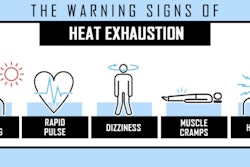
Safety is one of the most important topics and is vital for business survival. One of the major hurdles in developing a system for implementing safe practices in a rental company is that there is so much to cover. Some rental companies are so overwhelmed with how big the topic is that they might inadvertently put the project off. Also, equipment rental company owners and managers, like all small business operators, are busy taking care of the day-to-day running of their companies so it's very difficult to devote the time to develop a comprehensive safety program.
In my opinion, it's important to start the process leading to heightened safety awareness and better safe practices. Certainly, the goal will be to have a comprehensive safety program as soon as possible. But, there needs to be a beginning to this very worthwhile project, and perhaps surprisingly, it isn’t terribly difficult – it just takes time and organization.
A very simple beginning, that one could start today, deals with the questions: “How do we find time to discuss safety?" and "How do we make employees embrace it?” I believe safety messages should be presented every day. Call it a daily safety “huddle." Just as professional football players huddle before every offensive play, a safety huddle (or a series of them for different groups of employees) could take place near the start of every day. These would not be the longer safety meetings that are also important, but rather the very brief (less than a minute or two) version that offer a quick safety reminder or two. An example would be a reminder to lift items properly throughout the day. The next day’s reminder could be to use personal protective equipment in the performance of tasks. Some of these huddles could be less than 20 seconds so this is something rental companies could do even in their busiest of seasons.
Make a firm commitment to follow through
One of the keys to success of this or any other safety initiative is to make a firm commitment to continue doing it. It would be easy to start doing something worthwhile and then forget to continue. Remember, you want your staff to embrace the continuity of doing their work safely time after time and day after day, so it's important to develop the same habit in presenting your safety messages without the same excuses that employees would use for not performing their work safely.
Putting safety into practice doesn’t always need to be an all or nothing proposition. A safety manual doesn’t need to be a literary masterpiece. It doesn’t need to be fancy. In my opinion, it should be simple and easy to use. If it isn’t easy to use it probably won’t be used. Also, it's important to keep up with the ever-changing safety rules and regulations for your local area, state and nationally to be certain your company is in compliance. This is your responsibility as a business owner or operator.
Here are just a few additional points to consider:
- Get employees involved, if possible. It's more likely that employees will be committed to safety if they have a role in developing some of rules and guidelines.
- Be certain to document your safety efforts. Document safety meetings and other safety investments, as this proves you are serious about safety and safe practices.
- Even small rental companies can and should have a safety program.
- Every meeting the company has should contain a safety message component.
- Try not to think of a safety program as just another requirement that is placed on a business to make one’s life miserable. Think of it as an important moral and civic duty to help keep employees and customers happy and healthy.
- There are plenty of resources for safety materials. Safe practices are in everyone’s best interest (including the manufacturers of the rental equipment). So, be sure to tap into all of the possible sources for relevant safety materials. (Also, consider having an experienced rental business consultant offer some assistance in getting the process started.)
The task of implementing a safety program can seem very daunting. There are so many safety facets to consider in the rental business, including the vast array of rental equipment, customer safety, staff safety, delivery vehicle safety, safety involved with your facility, and more. While it can certainly seem overwhelming, safety is well worth the effort and should be a priority.
Remember, safety is often overlooked but is an extremely important part of business survival.
![Photo Of Dick Detmer 60999537d4064[1] Headshot](https://img.forconstructionpros.com/files/base/acbm/fcp/image/2024/03/Photo_of_Dick_Detmer.60999537d4064_1_.65e72fd913082.png?auto=format%2Ccompress&crop=faces&fit=crop&h=48&q=70&rect=0%2C420%2C2336%2C2336&w=48)




















